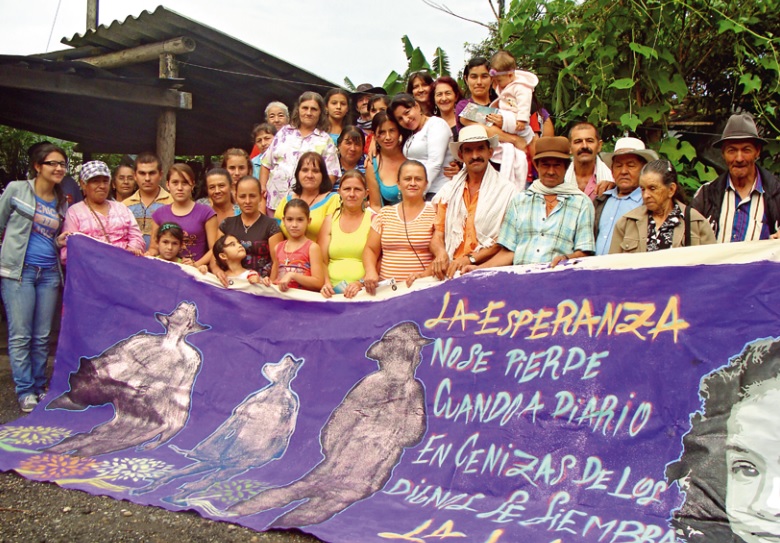






Between June 21 and December 27 of 1996, the Magdalena Medio Self-Defense Group (Autodefensas del Magdalena Medio, or AMM), led by Ramón María Isaza Arango and supported by the Colombian military, destroyed the community of Vereda la Esperanza located in the agrarian municipality Carmen de Viboral, situated between the mountains that surround the Medellin-Bogota highway in the department of Antioquia.
The actions of the Self-Defense Group led to the forced disappearances of twelve peasants (among them three youths and one woman), and the extrajudicial execution of one of them because of his alleged ties to the Popular Liberation Army guerrillas (Ejército Popular de Liberación). The majority of the victims were related to one another, as well as to other members of Vereda.
Despite filing multiple complaints—including those that provoked the death of Helí Gómez Osorio, an official of Carmen de Viboral—justice, truth, and reparations were not attained within the internal jurisdiction. Therefore, on July 1, 1999 the Corporación Jurídica Libertad (CJL) presented the case before the Inter-American Commission on Human Rights (IACHR). CEJIL joined the case in 2010, and on December 13, 2014, the IACHR submitted the case to the jurisdiction of the Inter-American Court of Human Rights.
The case of Vereda takes place in the context of Colombia’s armed conflict, and exemplifies how paramilitary groups exercised systematic and generalized human rights violations, which were tolerated by the Colombian armed forces. Specifically, the tragedy of Vereda developed with the awareness and collaboration of “Fuerza Tarea Aguila” members, a Colombian army platoon, who had militarized the area in order to suppress the guerrilla activity. To do so, they established a military base called La Piñuela, situated mere kilometers from Vereda.
Additionally, the case of Vereda would contribute to the examination of the legal benefits and the processes of truth clarification as defined by the Ley Justicia y Paz, or the Law of Justice and Peace. Since its adoption, this law—also known as Law 975 of 2005—permits an alternative punishment for those who comply with the process and help clarify the criminal acts. If the perpetrator confesses the whole truth, this punishment consists in five to eight years of prison, even in the case of severe human rights violations.
In February 2016, a specialized judge in Medellín ordered paramilitary leader Isaza Arango to be released, as he had completed eight years in prison, which was the alternative punishment as established by the Law of Justice and Peace.
Twenty years later, the definitive locations of the forcibly disappeared victims remain unknown. Moreover, there has been no advancement in the investigation of the extrajudicial execution, nor has the involvement of the FFPP been clarified. This lack of justice, the broken familial and communal ties, and the fear caused by the crimes created irreparable harm to its 129 victims. Nevertheless, the family members persist in their search for their loved ones and in their call to keep hope alive: #QueNoMuereLaEsperanza.
Together with the victims, CEJIL and the CPL will participate in a public audience before the Inter-American Court of Human Rights beginning on June 21, 2016. This day will mark twenty years since the beginning of the crime. The goal is to find hope for Vereda.
Ajude-nos a continuar este trabalho crítico e urgente com uma doação!
DOAR AGORA